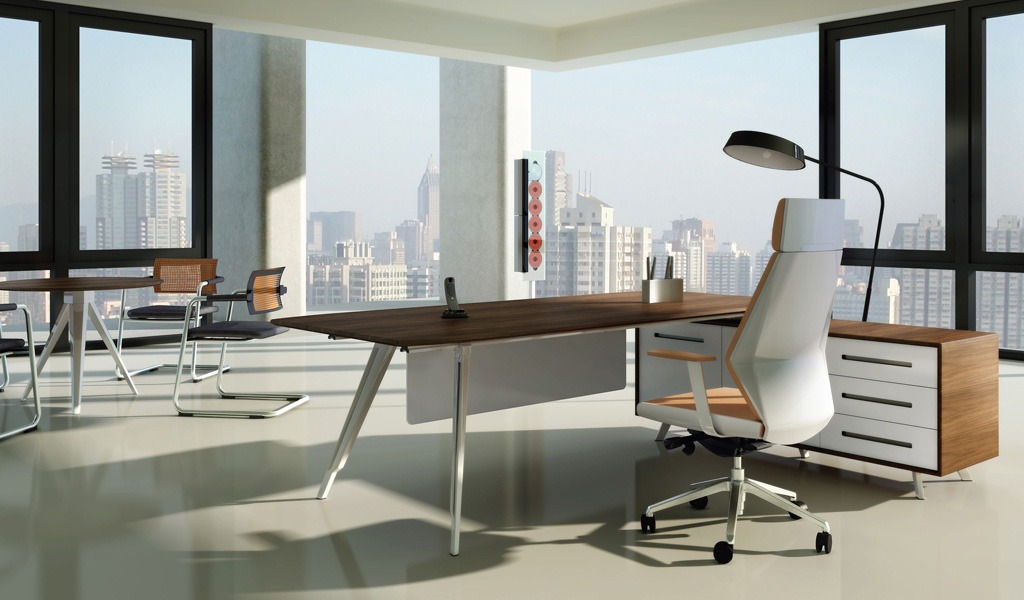
Cabinets in the modern style avoid excessive details like crown molding and raised panels. This style favors flat slab doors with sleek designs and minimal hardware.
Modern cabinets often use glass doors for an open look. Whether clear or frosted, glass front cabinets showcase dishes and other items inside.
Modern cabinets can also feature lighting. From under-cabinet lighting to interior cabinet lighting, these options illuminate and enhance the design of your kitchen.
Contemporary
As homeowners continue to strive for a balance of function and form, they are seeking out sleek, flat cabinet surfaces. These cabinets boast a matte sheen or wood grain with no adornments and minimal hardware. They are able to hold a large amount of items in tight spaces and allow the countertop to remain open for entertaining.
Many modern cabinet designs utilize geometric elements, such as straight lines and circles, or contrasting colors to create a bold, clean look. Full overlay door construction is also a hallmark of this style as it hides the entire frame when closed. Homeowners may prefer slab style doors or Shaker door styles, which add a bit of character and decoration to the simple frame.
Another popular trend in contemporary kitchen cabinets is the use of mixed metals. Mixing silver and gold hardware is a perfect way to create a unique, sophisticated look.
Minimalist
For those that favor a more stripped-down aesthetic, minimalist modern kitchen cabinet designs may be the right fit. This style aims to reduce visual clutter and prioritizes functionality, with out-of-sight storage, a sleek color palette and intentional decor elements.
Minimalist kitchen cabinets often feature frameless door fronts and simple hardware styles. Flat or tubular pulls, recessed handles and C and J-channel styles are common minimalist cabinet hardware choices to coordinate with the sleek door design.
Glass front cabinetry is another popular choice for minimalist kitchens. Frosted or clear glass contrasts the composite wood veneer panels of wall and base cabinets, adding a hint of visual texture to the kitchen.
For those looking to accentuate the minimalism of their kitchen with an injection of bold hues, a dark color like navy blue pairs beautifully with contemporary kitchen cabinetry. This trend is also well suited to natural timber surfaces that bring a warm, earthy tone to a modern kitchen.
Industrial
Whether they’re exposed brick, concrete, or steel, the texture of materials is one hallmark of industrial modern cabinet designs. A mix of natural wood and concrete combines with stainless steel or black accents to add a sleek, contrasting finish to the room. This style of cabinet is often seen with open shelving to let the owner showcase their personal style and favored collections.
The clean lines of this design are balanced with a touch of character by the use of tubular or rectangular bar pulls. A wide range of color options are available, from dark navy to bright royal blue. Pluck Kitchens contrasted flat-front cabinetry with bold, brushed metal handles for a sophisticated and functional look.
Unlike traditional cabinetry, which is highly detailed and embellished, shaker cabinets are sleek and minimal. This cabinet style, which originated with the Shaker religious group, can be dressed up or down with a variety of finishes and hardware for an eclectic, forward-looking space.
Frosted Glass
Frosted glass is a popular cabinet door option for modern designs. It obscures vision by scattering light that passes through, blurring images and giving it a translucent, frosted look. It offers 10–20% obscurity and lets natural light in without the harsh glare of clear glass.
There are many ways to frost glass, including sandblasting and acid etching. Sandblasting has a rougher texture that looks more rustic and industrial, while acid etching creates a smoother finish and offers more uniform results.
Before you begin, remove the cabinet doors and place them face down on a clean work surface. If they are glued to the frame, use a putty knife to cut away the molding around the glass panel. Once removed, carefully pry the panel loose with a chisel. Then, measure the dimensions of the glass panel and wood panel to determine how much material you will need. Afterward, cut the panels to size with a circular saw.